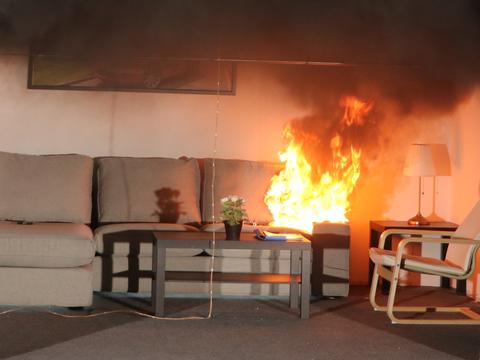Summary
The Fire Risk Reduction in Buildings (FRRiB) program conducts research to address the two largest components of the U.S. structure fire burden: fire protection costs and direct fire losses. The program advances fire safety by developing and applying multi-scale fire measurement capabilities, fire modeling software, standardized fire testing methodologies, advanced fire detection, and fire-resistant materials.
This research informs U.S. codes, standards, and industry practices to:
1. Lower the financial burden of fire protection and enhance structural performance.
2. Reduce fire-related deaths, injuries, and property losses by advancing low-flammability residential building materials, fire-resistant furnishings, and state-of-the-art fire detection and alarm systems.
Description

Objective:
To develop and advance fire and structure-fire measurement capabilities, predictive computational models, standardized fire testing methodologies, fire detection technologies, and fire-resistant materials, enabling innovative and cost-effective fire protection solutions that enhance occupant safety and improve the fire resistance of buildings and their contents.
What is the problem?
The burden of fire on the U.S. economy is significant, comprising approximately 2 % of the gross domestic product. Based on analysis of the Strategic Roadmap for Fire Risk Reduction in Buildings and Communities this program was developed to reduce the cost of the two largest components of the U.S. fire burden to buildings: commercial building fire protection costs and residential building fire losses.
Fire protection costs are the largest component of the structure fire problem. They include fire-resistant materials and construction features designed to contain fires. These costs represent about 2 % of global construction expenses in developed countries and 12 % of non-residential building costs in the United States. Research on multi-scale fires experiments, predictive modeling software, measurement techniques, and experimental databases provides the foundation to update and develop fire performance codes and standards.
The cost of direct fire damage and human losses is the second largest cost. To reduce this, we need less flammable materials with slower fire spread and growth and advanced fire detection technologies, giving people more time to escape and firefighters more time to act. Developing improved fire testing and modeling tools, advanced methodologies for measuring gas and solid chemistries, and providing material flammability data helps to create more fire-safe buildings, reducing deaths, injuries, and property damage.
What is the research plan?
This program leverages NIST’s expertise in fire modeling, fire testing at both full and bench scales, and advanced metrology. Research efforts focus on two key areas: (1) reducing fire protection costs without compromising safety through improved fire codes and standards, and (2) reducing residential fire losses by enhancing the fire resistance of building materials and furnishings.
The National Fire Research Laboratory (NFRL) plays a critical role in both areas, conducting full-scale fire experiments under realistic conditions. These experiments generate comprehensive datasets—including heat release, temperature, combustion products, and video—spanning fire scenarios from small-scale ignitions to multi-room fires. Insights from NFRL research refine bench-scale testing methods, validate predictive fire models, and expand the flammability database, ultimately strengthening fire safety, reducing residential fire risks, and shaping more effective fire protection standards.
Reducing fire protection cost efforts focus on providing experimental and computational tools and methodologies, and datasets in support of meeting current prescriptive requirements as well as switching to performance-based requirements. This requires high-fidelity, physics-based predictive fire models, continuous advancement of verification and validation and accuracy of these models, and reliable fire experimental data.
Reducing residential fire losses efforts focus on making building contents and structural components less flammable and advancing fire detection systems. This includes developing bench-scale tools and standardized methods to predict full-scale fire performance and behavior, and flammability databases. This supports the development of performance and measurement standards, advanced measurements and detection technologies, commercialization of fire-resistant materials, and use of high-fidelity predictive fire models.

